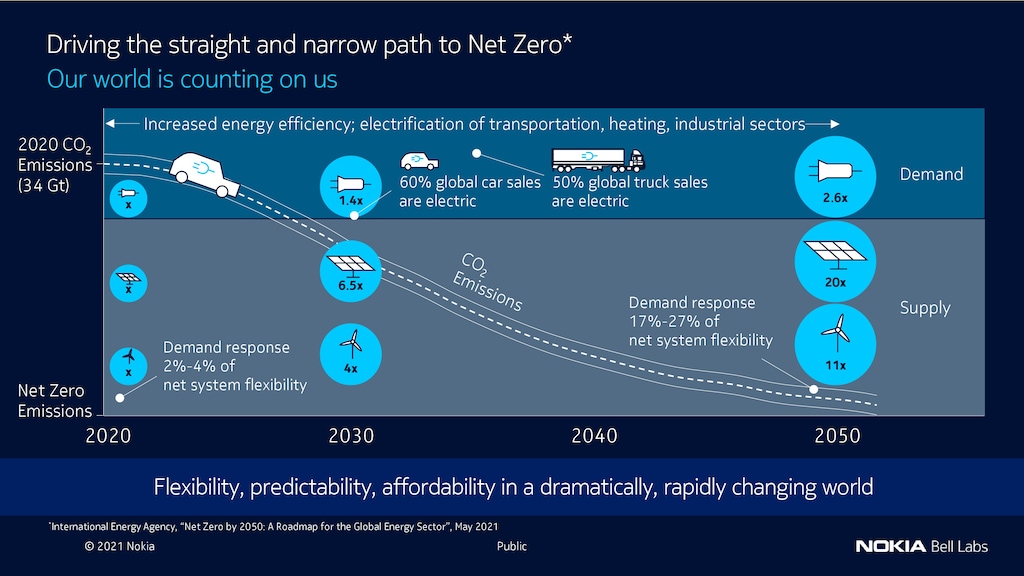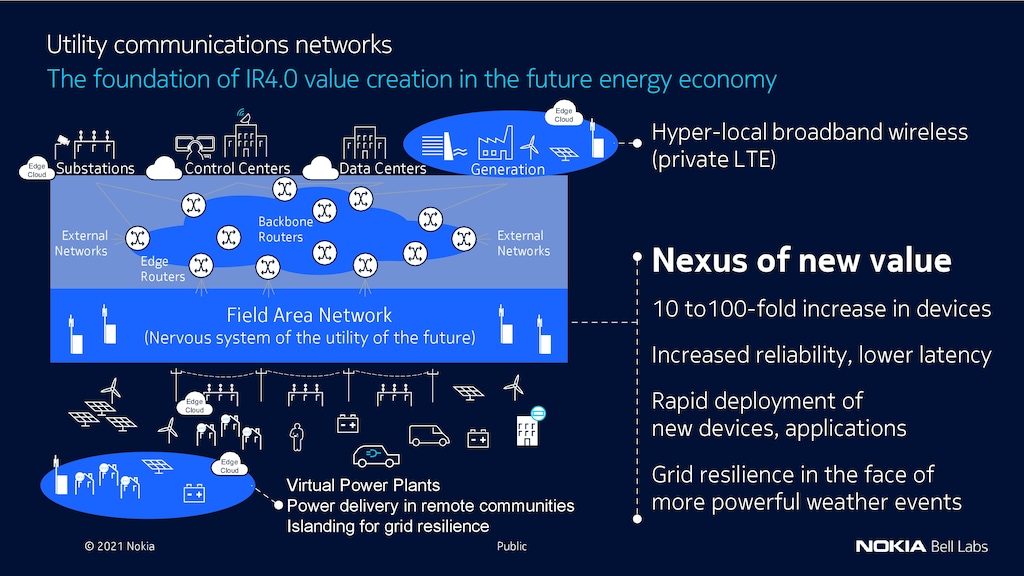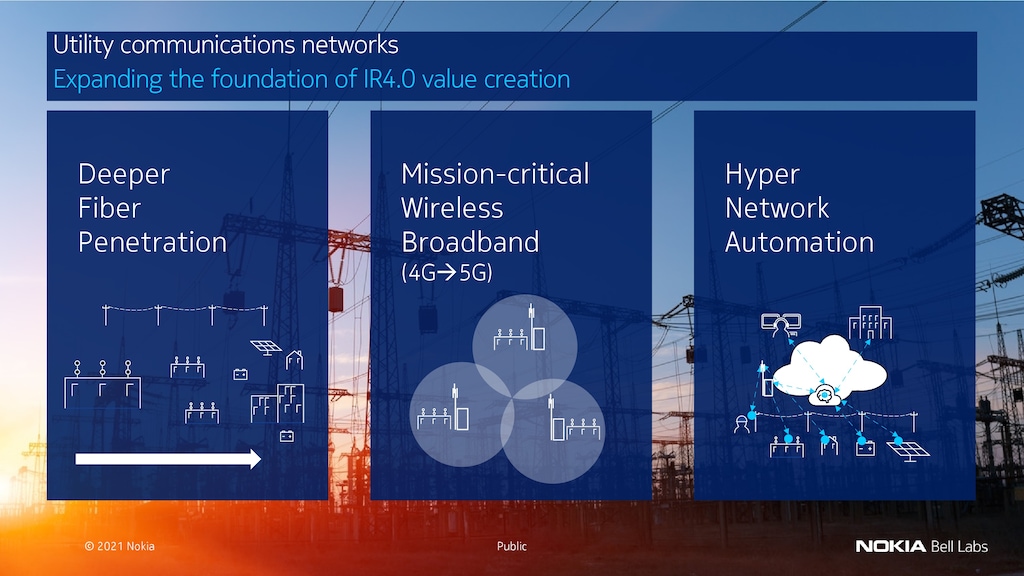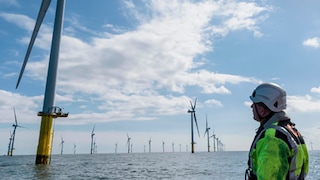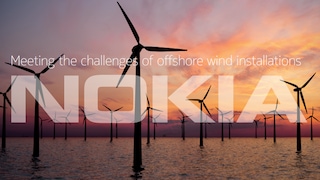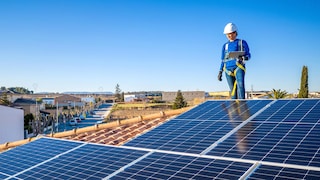Digitalization reshaping green energy
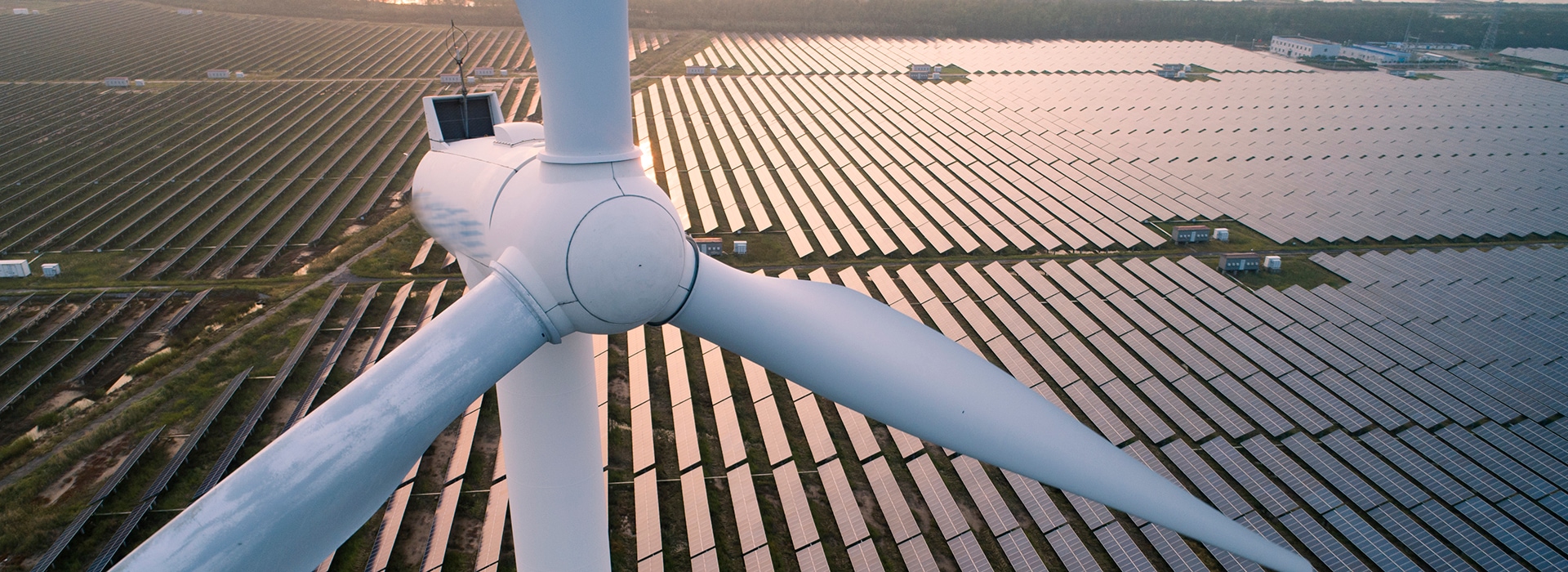
The issue of climate change has dominated headlines for decades but in the absence of a concerted effort to control spiralling carbon emissions, the threat it poses to humanity is existential. Extraordinary spikes in temperatures, record minimum temperatures, severe storms and extreme weather anomalies point to a planet under acute stress. Although, a growing number of countries have announced pledges to achieve net zero carbon emissions by 2050, work at the ground level has been slow, thus risking the prospect of limiting worldwide temperature rise below the critical 1.5°C threshold.
A major contributor to carbon emissions, today, is the energy sector. The negatives of fossil fuel-based power generation are well known. According to the International Energy Agency (IEA), “If today’s energy infrastructure continues to operate as it has in the past, it would lock in by itself a temperature rise of 1.65°C.”
As energy demand continues an upward trajectory and strict environmental regulations are observed, the need to accelerate the adoption of carbon-free, renewable generation is clear. The IEA expects renewables to almost match moderate demand growth during 2022-2024 with the sector witnessing a record-breaking eight percent expansion per year on average and catering to more than 90 percent of net demand growth during the same period.
“Power utilities have a significant role in a country’s ability to achieve their net zero emissions target. To successfully integrate growing amounts of distributed renewable generation and storage while maintaining power quality, reliability and a reasonable price, power utilities need to digitalize, automate and extend communications further out in the grid,” says David Christophe, Head of Utility Solutions Marketing at Nokia.
Transforming the energy grid
Renewable energy is on the cusp of transformational changes. It is receiving generous investments and incentives from governments, regulatory bodies and the private sector. But a key initiative that is set to revolutionize the industry is the drive towards digital connectivity.
The benefits offered by high-speed broadband are many. For instance, energy providers can deploy more efficient, reliable and sustainable infrastructure, and adapt to changing environmental conditions like wind speed and sunlight. They can reduce downtime by introducing intuitive sensors and automation to boost forecasting and predictive maintenance. On the customer side, such systems can monitor consumption and regulate the flow of electricity, creating time and demand-based power supply. It would also facilitate charging schedules; help store energy and minimize wastage.
From cutting-edge connectivity solutions offered by private wireless - 4.9G/LTE and 5G - to AI/ML, the Internet of Things (IoT), cloud computing, robotics, augmented and virtual reality and big data analytics, the latest digital innovations are helping to speed up the drive towards decarbonization significantly.
Mission-critical private wireless
Efforts to develop and expand renewable energy penetration has accelerated at a frantic pace but the industry still has plenty of ground to cover. One of the most notable areas that need attention is the handling of data and communications.
“Today, utilities tend to have good communications connectivity to their mid-to-large substations. Much of the renewable energy expansion, however, is happening in places where utilities have limited or no connectivity, today. This is a challenge since the energy sources themselves must be monitored and controlled,” says Dominique Verhulst, the Global Head of the utilities vertical at Nokia.
A robust and capable communications network allows for the smooth relay of large amounts of data, better voice and video communications and deployment of IoT-based predictive maintenance. It also allows workers to operate efficiently and safely during construction and operation, especially at remote and dangerous locations like offshore wind farms.
Long Term Evolution (LTE) is a key 4G technology that has been part of public mobile networks for a while. The proliferation of licensed wireless spectrum has made it possible for private networks such as LTE (4.9G) and 5G to play a major role in boosting communications. Industrial-grade private wireless can provide renewable energy providers with a network that is all-pervasive, independent, self-contained and secure.
“Running fiber everywhere is way too slow and expensive. This is where mission-critical broadband wireless connectivity becomes essential and is a major reason why forward-thinking utilities are looking to LTE/5G for robust connectivity,” says Ken Budka, Senior Partner at Bell Labs Consulting.
“Once you have wireless connectivity, you can connect to renewable energy sources, storage and put additional monitoring and control devices wherever needed in a matter of hours, rather than years. This is a gamechanger in grid operations,” he adds.
Expanding the digital scope
Presently, many wind farms are fitted with fiber which supports Supervisory Control and Data Acquisitions (SCADA) connectivity for remote monitoring and control. For a cost-effective solution with a broader scope, private LTE (4.9G) networks can enhance offshore connectivity and meet the needs of secluded locations more efficiently and integrate with a network of sensors, cameras, cloud storage and analytics technology for remote maintenance and control.
Private LTE can enable a comprehensive IoT system that will connect both onshore and offshore personnel. It enables the installation of sensors at wind turbines to monitor temperature, vibrations, humidity and air current. This data is critical to track the integrity of the turbine and prevent damage. In situations where further visual inspection is needed, Unmanned Aerial Vehicles (UAVs) can be pressed into service. A drone networks solution will be able to connect and control a fleet of UAVs using private LTE. The machines would then provide high-definition video footage in real time.
Another emerging trend that has far-reaching implications for renewables are microgrids. By virtue of them being localized, microgrids operate independently from the traditional grid. They offer flexibility and efficiency, especially, when it comes to distributed energy resources such as solar. Since microgrids can operate during outages, it reinforces grid resilience and help mitigate disturbances.
An industrial-grade private wireless network can augment the microgrid controller by helping it to connect to all assets that manage the grid. It ensures optimal load balancing between energy demand and availability of local distributed energy resources. Avoiding the need to deploy cabling to connect sensors and other devices associated with operating the microgrid, it leads to faster deployment and expansion.
Utilities operating water distribution systems can also use private wireless network to connect their sensors and meters to that of the power utility. On average between 20 to 30 percent of drinking water is lost due to leakage which is undetected for the most part. The IEA has calculated that in 2022 about one TerraWatt hour (TWh) of energy is used globally to produce drinking water. It means that with the effective utilization of IoT in detecting and preventing leaks, over 300 Gigawatt hours (GWh) can be saved annually.
A natural outcome of using advanced networking technologies is the generation of massive quantities of data that needs to be collected, processed and stored. This is where AI/ML comes into play. Sophisticated analytic software is being increasingly adopted by all types of industries. In the case of wind and solar farms, machine learning is helping to manage asset maintenance programmes, upkeep of records, forecasts and weather tracking.
Giving a further boost to power utilities operations is automation which enhances reliability and lowers cost. Automation is essential to controlling costs as the number of devices and applications are increasing in energy grids. It even helps maintain the balance when there are outages or unexpected changes in supply and demand. Furthermore, it allows for the rapid deployment of new devices and applications, keeps the grid secure and minimizes the chance of human error.
Add to the mix virtualization which comes with some notable advantages. It contributes to grid resiliency – services and apps can be quickly launched in the event of an outage or anomaly; helps in grid control, monitoring and restoration; and supports new business models that may require third party access to grid devices.
Wider-scale renewables adoption
Rapid advancements in digitalization provides renewables with the unique opportunity to take over the primary responsibility of providing sustainable and low-cost energy. As time passes more and more operators are beginning to realize the benefits of digital connectivity.
The journey has not been smooth, and roadblocks remain, like the availability of licensed spectrum. To accelerate the path to net zero while maintaining the power reliability, quality and price that society depends upon, the importance of a ubiquitous smart grid infrastructure cannot be understated. These and many other challenges remain but the race to save our planet from catastrophe makes it imperative for us to switch to clean energy. Digital technologies will play a pivotal role in that regard. A fact which was emphatically underlined by Pekka Lundmark, Nokia’s President and Chief Executive Officer (CEO), when he said: “There is no green without digital”.
Read more

Utility of the future – a Bell Labs perspective
About Nokia
We create technology that helps the world act together.
As a trusted partner for critical networks, we are committed to innovation and technology leadership across mobile, fixed and cloud networks. We create value with intellectual property and long-term research, led by the award-winning Nokia Bell Labs.
Adhering to the highest standards of integrity and security, we help build the capabilities needed for a more productive, sustainable and inclusive world.
Media Inquiries:
Nokia
Communications
Phone: +358 10 448 4900
Email: press.services@nokia.com
